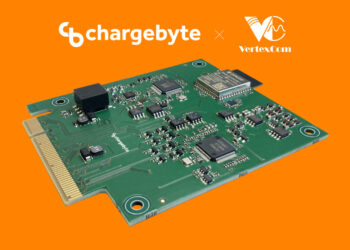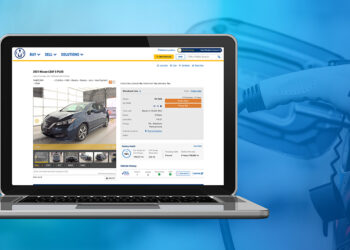Did he mess it up and leave the storied Japanese company on its back foot? Not quite. Toyoda, who will now be chairman and is expected to remain a strong force behind the scenes after he steps down in April, may have just played the master stroke.
Nervous in the growing shadow of Elon Musk and Tesla Inc., global carmakers have hastily talked up massive, multibillion-dollar investments, laying out their electrification plans. They’ve released and recalled models (because of fire and other risks), while running into serious teething troubles as EV profitability has struggled.
Toyota took a different tack. It focused on reducing emissions — at every stage of vehicle production — as the endgame. It maintained that green cars will contribute to lowering environmental damage “only when they come into widespread use.” In addition, it has taken on low-key but effective measures to do this, including working with its many tiers of suppliers and improving existing technology. Sadly, those don’t get investors and analysts excited, or at least, as psyched as announcements of big dollars on futuristic spending does.
The Japanese carmaker’s EV efforts have been understated and long-running: It setup an EV division in 1992 and introduced the electric RAV4 four years later. That model, priced at almost $50,000, was discontinued in 2014 because charging times were too long, unless customers had the more expensive Level 2 charging station to go a range of 103 miles. Toyota introduced other smaller EVs in the 2000s, investing over 1 trillion yen ($7.7 billion) and producing more than 19 million batteries over the past three decades. In 2021, the company dedicated 2 trillion yen more towards powerpacks and more recently, it devoted almost $6 billion for batteries in the US and Japan.
When Toyoda laid out Toyota’s EV strategy in 2021 — with heir and Chief Branding Officer Koji Sato by his side — he noted 35% of the firm’s vehicles would be fully electric by 2030. The car company had boosted its target from two million, yet the new target underwhelmed the market. It’s now talking about a dedicated-EV platform.
Toyota couldn’t convince the world it wasn’t reluctant about EVs, in part because of Toyoda’s straight-shooting, plain-spoken approach. He outlined insufficient clean energy and charging infrastructure as a “limiting option” for customers. At the end of last year, Toyoda said “it takes time,” while also noting that they’d “been investing in electrification” since they “started working on hybrids, with our sights on building BEVs [battery electric vehicles].”
Now, as EVs and batteries have become a geopolitical flashpoint, the challenge of sourcing raw materials and building solid EV supply chains — not just selling a lot quickly — has been magnified.
That’s what Toyoda seems to have been hung up on. In response to a question about EV strategy, the supply-chain guru pointed to “first-hand difficulties” around sourcing raw materials because, unlike most other carmakers, it works on batteries, too.
He had a point. Peers are still working out their supply agreements and turning to China, despite diplomatic tensions. While EV sales have risen under regulatory pressure and subsidies, battery technology has kept costs high. Charging infrastructure is inadequate and the cars themselves remain unaffordable for most. In the US, for instance, two-thirds of total EV sales are concentrated in eight states that account for around half of the total market, according to Citigroup Inc. analysts.
Still, Toyoda’s approach has had results. Between 2019 and 2021, his firm brought down direct and indirect greenhouse gases. In 2021, Toyota’s 18.1 million hybrids had reduced emissions (because of lower fuel consumption) as much as 5.5 million EVs would have. Compared to some other large automakers, its emissions-per-vehicle are lower, as is the energy it uses to produce a car.
Sure, critics often eye this with skepticism. However, isn’t cleaner air why the world got into electric vehicles in the first place? To lower emissions? It wasn’t just to create a fancy, new car in the name of innovation. Expensive technology rarely outlives the practical alternatives used by the masses. At best, they co-exist. The invention and death of the supersonic Concorde aircraft is one example of excessively costly endeavors that eventually become hard to justify. Or, viewed another way, ceiling and floor fans still exist (Dysons in their best form), even though air-conditioning came along.
Perhaps Toyoda realized that for the world’s biggest car company to remain ahead, it’ll have to keep up with the branding exercises. Especially after Toyota’s epic failure to launch the bZ4x electric. Toyoda, a self-described rally-racing “car guy,” was never able to do the breathless marketing spiel to sow lofty expectations. He acknowledged this: “While we may not have explained things adequately, I think our products speak best for themselves,” adding that the firm was pursuing “all options.”
As for Toyota, the new CEO is a good look. After all, the efforts of Sato at Lexus set the brand up to target 100% battery EV sales by the end of this decade in certain regions. I imagine Sato will start focusing the firm’s wide-ranging future mobility strategy toward EVs and hybrids – and show investors that. Now that the company is making EVs in China, he is likely to benefit from the uptick as a portion of their global total, as well. With the US Inflation Reduction Act giving its various plug-in hybrid offerings a major boost, the earnings there are likely to provide Toyota more wiggle-room with its EV plan. The Japanese carmaker won’t be a Tesla anytime soon, but it will remain the trusty drive most consumers want and, importantly, can afford.
Playing the martyr and replacing himself was Toyoda’s clearest message yet. If Sato can tell the right — and most electrifying story — then Toyota can finally shed its laggard image.
More From Bloomberg Opinion:
• The Wheels Have Come Off Electric Vehicles: Anjani Trivedi
• Musk’s Big Tesla Growth Target Is a Problem: Liam Denning
• Mr. ‘Voltswagen’ Was Too Big a Shock to the System: Chris Bryant
This column does not necessarily reflect the opinion of the editorial board or Bloomberg LP and its owners.
Anjani Trivedi is a Bloomberg Opinion columnist. She covers industrials including policies and firms in the machinery, automobile, electric vehicle and battery sectors across Asia Pacific. Previously, she was a columnist for the Wall Street Journal’s Heard on the Street and a finance & markets reporter for the paper. Prior to that, she was an investment banker in New York and London
More stories like this are available on bloomberg.com/opinion








